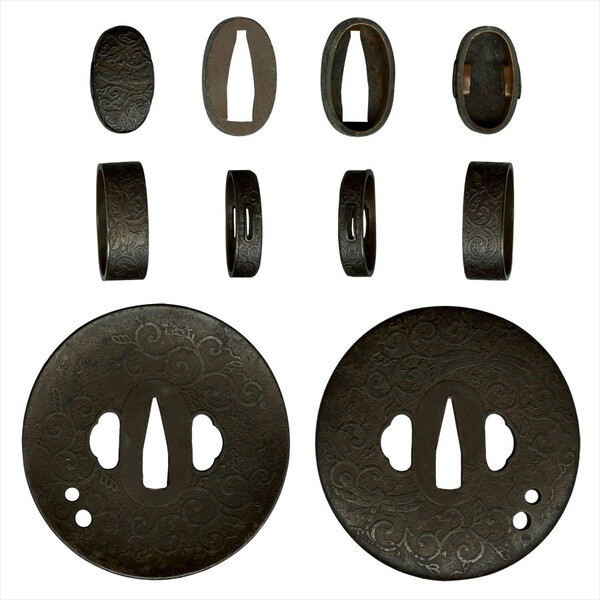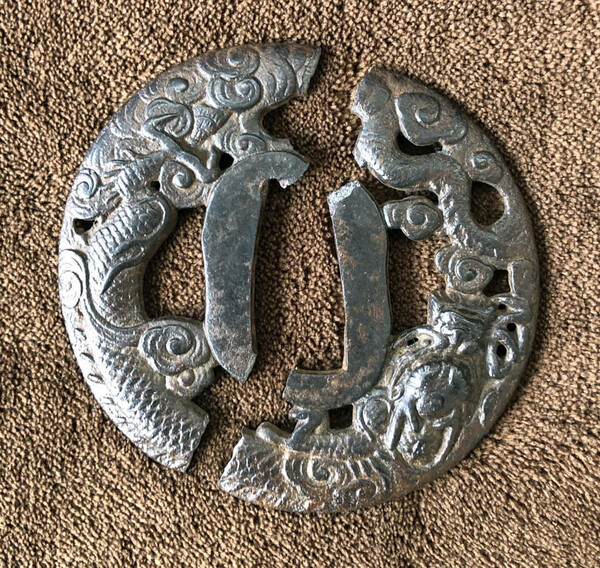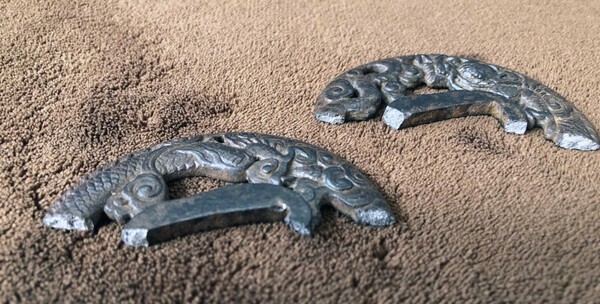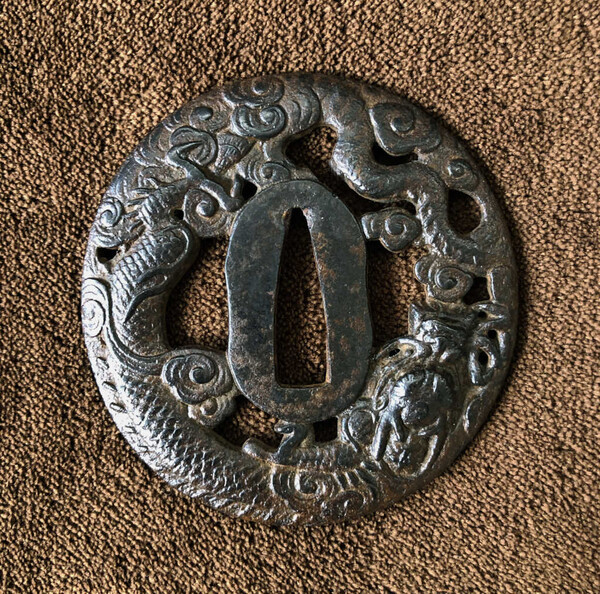-
Posts
3,242 -
Joined
-
Days Won
99
Content Type
Profiles
Forums
Events
Store
Downloads
Gallery
Everything posted by Guido
-
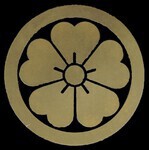
Dojigiri
Guido replied to Bugyotsuji's topic in Sword Shows, Events, Community News and Legislation Issues
https://kougetsudo.info/doujigiri-yasutsuna/ -
This is a set I used to own around 15 years ago, and later sold to a friend/dealer in the US: hard to see in the photos, but the tsuba has actually a quite pronounced wangata shape. Rather large, the tsuba has a diameter of over 8 cm, and the fuchi is a little shy of 4 cm. All iron, the fuchi has a shakudō inset, the kashira matching shitodome, and the motif is dragonflies and karakusa. Looks Hazama’ish at first glance, but papered to Nagasaki IIRC.
-
Hint: I wrote "inscribed", not " signed" ...
-
Quite frankly, I’m impressed and very pleasantly surprised – yes, it is indeed a cast tsuba, although the way I worded my initial post was (rightfully) met with the suspicion that it might be something else. The story behind it: I recently visited a sword dealer, and this tsuba was in the middle of his desk. I was surprised, because I found it rather ugly and of low quality, but the convincing patina fooled me at first glance. Curious as I am, I picked it up. I guess you all know the adrenalin rush when you think you totally f*cked up, and broke something, although logic dictates otherwise. Well, I experienced that when I all of a sudden held half of a tsuba in my hand! After my pulse went back to normal, the dealer explained that it was mounted on a wakizashi he bought, and suspecting that it was cast, he took it off – and accidentally dropped it on the floor, where it broke with a loud ‘pling’. I admit that I did the slightest of photoshopping to hide the two thin lines on the seppadai where it broke, but it more or less fits back together perfectly. Sooo, no lecture on how to identify cast tsuba, you guys are way ahead of that. I’m a little proud how far this forum has come in this regard. Kudos to all who answered (and to those who didn’t, but thought “who is this moron trying to fool?” )
-
No, because a) I can’t suck in my considerable stomach that much, and b) the cloth isn’t long enough in front to cover all 12 inches.
-
I didn‘t take a photo, but it‘s just the underside of the dragon.
-
… but I’d like to hear opinions about this tsuba. Wakizashi size, unsigned, showing the top view of a coiled dragon in clouds. Living in the heartland of nihontō, so to speak, I usually don’t need any feedback from the NMB to identify tsuba, but I have a reason to put this one up for discussion. I wonder if people will be as surprised as I was when I present the answer in a few days …
-
Btw, the flared, angled sayajiri is called denchū-kojiri 殿中鐺, because it resembles a certain type of straw hat: Here’s a koshirae of mine, the kojiri is *very* heavy. I dare to say that this one is more useful as a club than using the smallish blade it houses:
-
Nah, it's called fundoshi 褌. Here's how to wear it (if you're into this kind of complex underwear ...):
-
That‘s the actor Takakura Ken in one of his movies, not an original WWII photo ...
-
For the same reason I-beams are made: to reduce weight without sacrificing too much integrity.
-
FWIW: the NBTHK keeps its blades and koshirae at 21° Centigrade and below 55% RH - at least those on display.
-
Fake news, the cleaner was the victim of a witch hunt. It turned out he was only looking for squid in the loo, but the lame stream media twisted his words - read the transcript!
-
I heard from very reliable sources that the unregistered swords in the NBTHK's basement were discovered only because they were making space for the missing DNC servers.
- 27 replies
-
- 12
-

-
Tantō are blades of up to 1 shaku (30.3 cm). Aikuchi are koshirae (mostly for tantō) that don’t have a tsuba. Tsuka only covered in samegawa, without tsukaito, are called dashizame-tsuka. The tantō in question clearly lost its tsukaito (i.e. not intended to be dashizame) and is otherwise mounted as an aikuchi.
-
I'm not so sure that it's mainly the local satesu - for example, after Kaneshige moved to Mino from Echizen, his swords still maintained the typical blackish, "Northern" jigane; I can't imagine that he had brought tons of sand from his old province.
-
Interesting, that's almost identical to the one I posted 2 1/2 years ago: http://www.militaria.co.za/nmb/topic/21438-regular-samurai-koto-koshirae/?hl=tsuka&do=findComment&comment=220811
-

Kozuka with Rare Motif
Guido replied to Vermithrax16's topic in Auctions and Online Sales or Sellers
No need to speculate, just send them an email - they speak English, and are generally very friendly and helpful. -
Interesting theory – except that it's 'a', not 'ah'. And besides, 'n' ん (which isn't pronounced 'un' btw) was not distinguished from mu む in writing until the Japanese script reform in the early 20‘th century. That’s why ん, for example, isn’t found in the famous iroha いろは poem, which was frequently used as an ordering of the kana. As to the mouth open / mouth closed pairing: so far I’ve seen this symbolism only when it comes to Niō and shishi. Those pairs are generally believed to represent the vocalization of the first grapheme of Sanskrit Devanāgarī which is pronounced "a", and the last grapheme which is pronounced "hūṃ". These two sounds together (a-hūṃ अहूँ) symbolize the birth and death of all things. A-un 阿吽 is the transliteration of the two syllables in Japanese .
-
Here's what I read: 東神成行作 Tōshin Nariyuki Saku = made by Tōshin Nariyuki 昭和廿年四月吉日 Shōwa Nijūnen Shigatsu Kichijitsu = a lucky day in April of 1945
-
For those not familiar with “Denglisch” (German pseudo-anglicisms): handy = mobile phone
-
I think it was intentional, the cross-hatching indicates nunomezōgan (which aditionally might have worn off a little).
-
Are you seriously suggesting that my comments had the sole purpose of harming this particular seller’s sale? Let me assure you that I have no horse in this race, I just answered the o/p’s question. It's up to her to make up her own mind. Also, it's not my habit to post any blah blah blah just to boost my post count. But since you chimed in: what is *your* opinion? Do *you* endorse this tsuba, and why? Not suffering from an inflated ego, I have no problem to be corrected if wrong.


